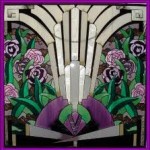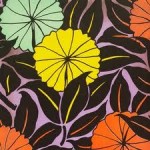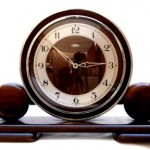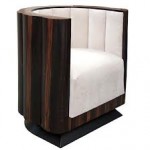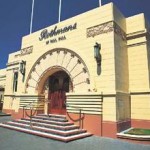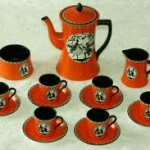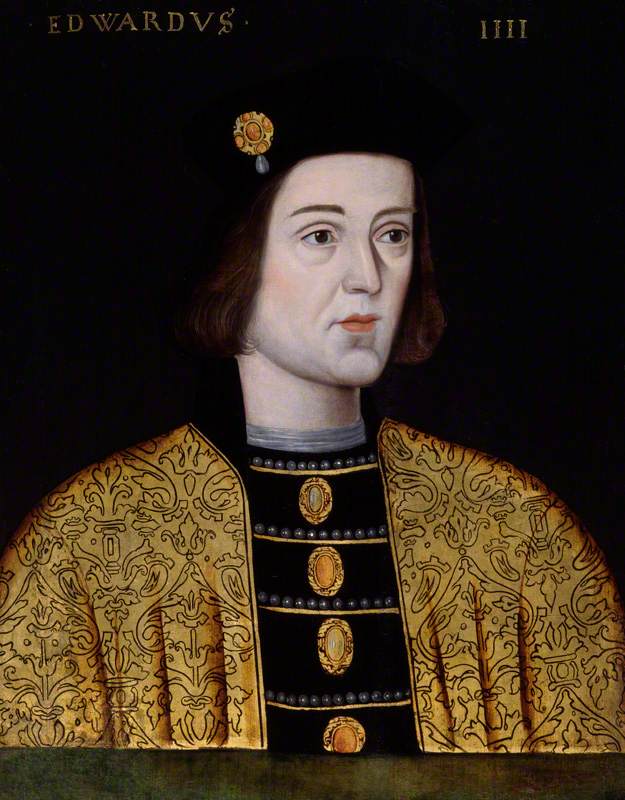What is ‘Art Deco’?
The term ‘Art Deco’ was coined in 1966, following a retrospective exhibition entitled ‘Les Années ’25’, held at the Musée des Arts Décoratifs in Paris. This commemorated the 1925 Paris ‘Exposition Internationale des Arts Décoratifs et Industriels Modernes’. Originally planned for 1915, but postponed on account of the First World War, the 1925 Exposition was distinctive from previous international exhibitions for two reasons. For the first time, the decorative and applied arts held a centre stage. The criteria for inclusion in the Exposition also emphasised the modern, to the extent that well established decorative artists might be excluded because they were seen as representative of a previous generation.
The architecture and decorative arts shown at the 1925 Exposition embodied a whole range of unconnected styles and sources, including a modern interpretation of the style of Louis XVI (18th century), seen as the golden era of the French decorative arts, and references to the avant-garde art movements of the time, such as Cubism and the Bauhaus. Diaghilev’s ‘Ballets Russes’ and exotic and ancient cultures such as ancient Egyptian (following the discovery of the Pyramid tombs) and Mayan civilizations, the art of Japan and Africa, also had an impact on the style. Not to be confused with Modernist art movements, with their social philosophies and manifestos, Art Deco was purely decorative. A modern style, responding to the machine and to new materials such as plastic, Art Deco in its 1925 context was also sumptuous, a luxury style, characterised by individually produced luxury goods for wealthy connoisseurs.
The 1925 Exposition had a major influence on the decorative arts in America. Although the United States was not represented, many Americans visited the exhibition. In 1926 the Metropolitan Museum of Art held a retrospective exhibition to which original contributors were asked to send material. The American contribution to Art Deco is known as Streamlining and is characterised by clean lines and strong curves. It was applied to the design of cars, architecture and furniture. It was also applied to new mass-produced goods such as refrigerators and radios. In their attempt to reach new consumers from around 1930, manufacturers took iconic elements of the Art Deco styles and simplified them for mass production. Married to modern machine age materials such as bakelite and chrome, this style heralded an era of ‘modern’ design for mass consumption of affordable consumer goods.
How to Find Out About Art Deco in the National Art Library
The National Art Library has a wealth of material for studying Art Deco in its various forms, including general works on Art Deco, catalogues of the International exhibitions, Salon and other exhibition catalogues, trade literature, sales catalogues and periodicals.The Library also houses original treasures such as fine bindings, beautifully printed and illustrated books, and printed books of designs.
Original Art Deco Works in the National Art Library Collection
The National Art Library also collects original fine bindings, luxury printed editions and illustrated books, popular fiction for its illustrations or dust jackets and other works which are considered important visual records of an artist’s work.
Related Material in the Victoria and Albert Museum
The Prints & Drawings Study Room
Works, such as prints, designs, posters, advertisement and trade cards and photographs, can be seen at the . Holdings of Art Deco material include posters by such artists as Edward McKnight Kauffer, Paul Colin and A.M. Cassandre, the fashion designs of Paul Poiret and designs for the Houses of Worth and Paquin, designs for interiors, and work by the photographers Edward Steichen, Cecil Beaton, Florence Henri and Man Ray.
Collections can be searched using the printed catalogues in the Print Room. Catalogues include those for Posters, Prints, Photographs, Wallpaper and Decorative Papers, and Drawings and Watercolours. There are also subject and topographic catalogues. The Print Room also has access to the museum-wide online collections database. The Prints & Drawings Study Room can be contacted on +44 (0)20 7942 2563 or [email protected].
The Archive of Art and Design
A large collection of mainly British book jackets from this period is held at the Archive Art and Design. These are interesting as examples of commercial graphic art and were often designed by well known poster artists. Some of the book jackets are Art Deco in design and include work by Edward McKnight Kauffer, They’re Lee-Elliott and Eugene Thurston (Gené). See item 33 in Lomas, Elizabeth Guide to the Archive of Art and Design, Victoria & Albert Museum (London: Fitzroy Dearborn Publishers in association with the Victoria and Albert Museum, c2001). A detailed inventory is in the process of being compiled and there is also a brief listing of some of the designers’ names.
Access to the Archive is by appointment. For further information or an appointment please contact the Archive on +44 (0)20 7603 1514 or [email protected].


